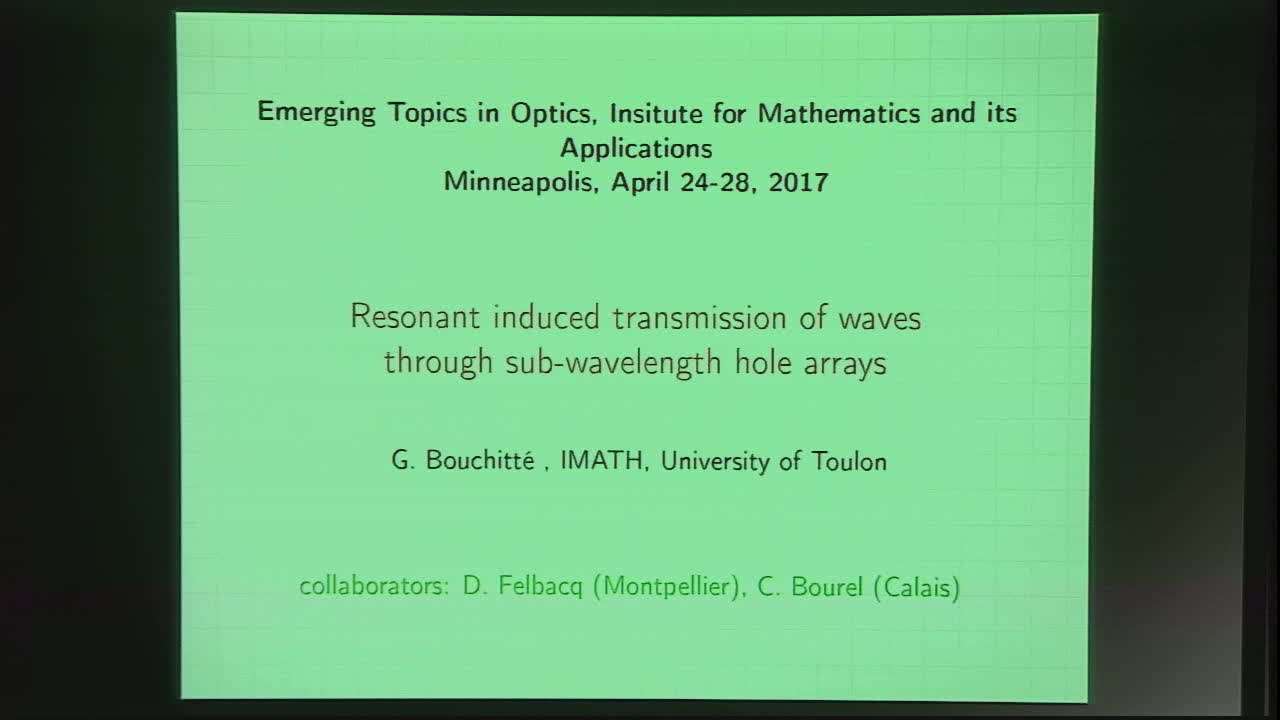Resonance Induced Transmission Through Subwavelength Hole Arrays
Presenter
April 26, 2017
Abstract
We study a device that consists of a bidimensional array of holes inside a matrix with a very high permittivity. This kind of structure gave rise to a very large amount of theoretical and experimental publications after the discovery that they could transmit waves at certain wavelengths larger than the diameter of holes. This phenomena can also be observed for acoustic waves. In the present work, we study the low frequency behavior, i.e. the homogenization, of scalar waves.
More precisely, the structure is periodic with a period $\eta$ much smaller than the wavelength. It is illuminated by an incident scalar field $u^i$ satisfying Helmholtz equation. It gives rise to a total field $u_{\eta}$ satisfying a Helmholtz equation of type $\nabla \cdot(a_{\eta}\nabla u_{\eta}) + k2 u_{\eta}=0$. The coefficient $a_{\eta}$ is equal to 1 inside the holes and to $\eta2$ inside, i.e. the permittivity of the matrix in which the holes are made is very high. We study the limit of $u_{\eta}$ when $\eta$ tends to 0. A homogenized model is derived where the array is described by a strongly anisotropic and dispersive homogenized permittivity: the field can only propagate in the direction of the holes. Resonances are shown to exist as poles of the homogenized permeability, leading to sharp peaks in the transmission. These resonances correspond to frequency that are the eigenvalues of a spectral problem taking place on the basic cell of the device.
Joint work with Christophe Bourel (Calais University, France) and Didier Felbacq (L2C, Montpellier university, France).
